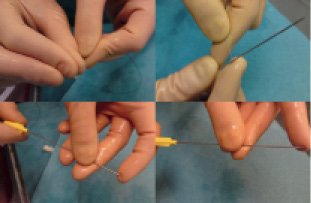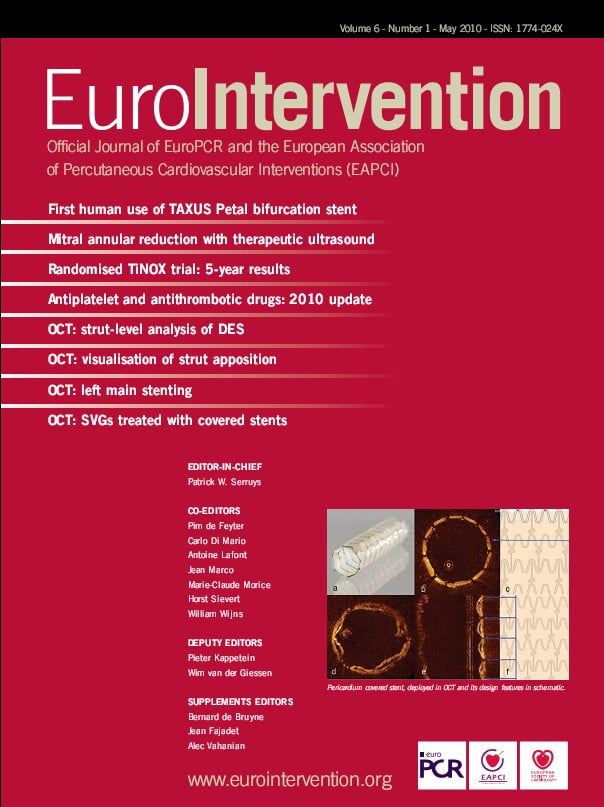In this chapter of Tools & Techniques, we describe our experience and approach to wire usage since guidewire selection is an important component of a successful coronary intervention. Guidewires are essential tools, to track through the vessel, allowing access and the ability to cross the lesion with interventional devices.
When Gruentzig performed the first coronary angioplasty in 1977, he was using a blunt, closed-end, inner balloon catheter with a short guidewire attached to its tip. Safe crossing of severe stenoses with this large, non-manoeuvrable catheter was limited. Moreover, with this system, it was impossible to perform independent movements of the wire and balloon1,2. In 1982 Simpson et al reported the first experience with a new over-the-wire balloon system. It had an independently movable, flexible-tipped guidewire within the balloon dilation catheter. This guidewire could be passed beyond the coronary stenosis, providing a platform for the subsequent delivery of the balloon catheter3. Since then, guidewire technology has rapidly advanced.
The suitability of a particular wire to different clinical situations depends on its performance characteristics that are determined by variations in the guidewire components (Figure 1).

Figure1. Components of a guidewire. There are three main components of guidewire structure: core, distal tip and outer covering. The design of guide wire tip: (A) core-to-tip, (B) shaping ribbon.
The main performance characteristics of the guidewires are e.g., flexibility, torque control, steerability, trackability, crossing, radiopacity, lubricity, lubricity retention, tip shape retention, support, tactile feedback, pushability, and prolapse tendency4.
The inner part of the guidewire is referred to as the core. It extends through the shaft of the wire from proximal to distal part where it begins to taper. It is the stiffest part of the wire that gives the stability and steerability to the guidewire from its proximal end to the distal tip. The core material affects the flexibility, support, steering and trackability of the wire while its diameter influences the flexibility, support and torque of the wire.
The distal part of the wire, the tip, is essential for lesion crossing and precise steering. All guidewires have a specific surface design such as stainless steel coils, polymer or plastic covers, and hydrophilic or hydrophobic coatings.
The actual manipulation of the wire is a two-step process: shaping the wire tip and steering the wire through the vessel. A bend at the tip of the guidewire allows it to be manipulated and needs to be adapted to coronary and lesion morphology. The most common way of shaping the guidewire is to draw it over the thumb and index finger, a guidewire introducer or a needle (Figure 2).

Figure 2. Shaping the wire. The most common way is to use the thumb and index finger or a guidewire introducer.
There are multiple factors that contribute to a successful coronary intervention and appropriate guidewire selection is one of them. The guidewire market is very broad and constantly evolving. Variation in the structure of the guidewire can create significant differences in wire performance that affects the suitability of a particular wire in varying clinical situations. Although guidewire selection is influenced by criteria related to vessel anatomy, lesion morphology and the devices to be used, in real life scenarios, the guidewire selection is based upon operator’s experience and preference. Rather than trying to use all the guidewires available, it is more reasonable to focus on selected guidewires and to understand their individual characteristics and use.
Supplementary data
To read the full content of this article, please download the PDF.
Video 1. Steering with dye
Video 2. Perforation
Video 3. Dissection
Video 4. Subintima
Video 5. Fracture
Video 6. Looping

